What northeast Pa. can expect from the solar eclipse, and how to view it safely
There are several completely safe ways to view the solar eclipse on April 8. Although not a total eclipse here, the partially eclipsed sun will be spectacular, its effect on the landscape unmistakable as the sunshine diminishes.
Viewing the brilliant sun on any day requires special eye protection or finding indirect ways to view it.
Total solar eclipses are exceedingly rare as seen from any given place. Even without being in the full shadow of the moon, as seen from northeastern Pennsylvania almost 95% of the sun will be covered. All that will be left will be a slim crescent.
As the moon passes in front of the Sun, the shadow will trace a path southwest to northeast, crossing Erie in northwestern Pennsylvania and extending through mid-upstate New York.
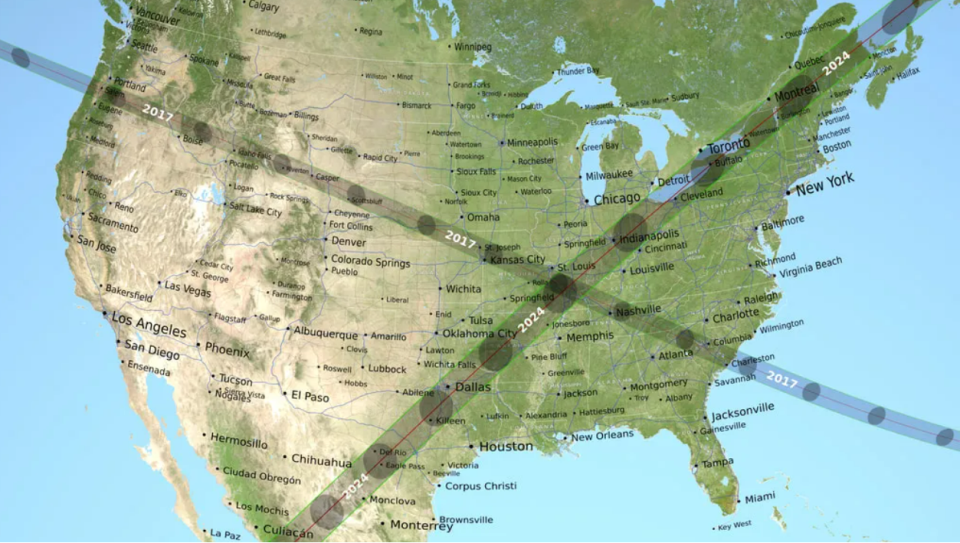
Seeing totality
The width of the shadow providing the view of totality is about 120 miles wide as it crosses New York. The nearest point to Honesdale is approximately 160 miles away, close to Syracuse, New York.
Those within that path have the chance to see what is described as one of the most astonishing and beautiful spectacles in the sky. When totality is reached, the face of the sun is entirely blackened by the silhouette of the moon, with the glow of the solar corona all the way around. It only lasts for a few short minutes, during which it is entirely safe to see without any eye protection.
The scene is positively strange as the daytime sky darkens like deep twilight and the brightest stars and planets appear. Cameras will be clicking away, but don't be too distracted, fidgeting with equipment. It will be over all too soon.
From Syracuse, totality lasts one minute, 27 seconds. From the centerline, three minutes, 41 seconds.
What can northeast Pa. expect during the eclipse?
We have good reason, however, to be excited about the very deep partial eclipse coming to the Pocono Northeast. On May 10, 1994, we had another deep partial and as viewed from Wayne County, I found it astonishing. Safely viewed by projecting the solar image from a small telescope onto a white screen, the sun narrowed to a slender crescent.
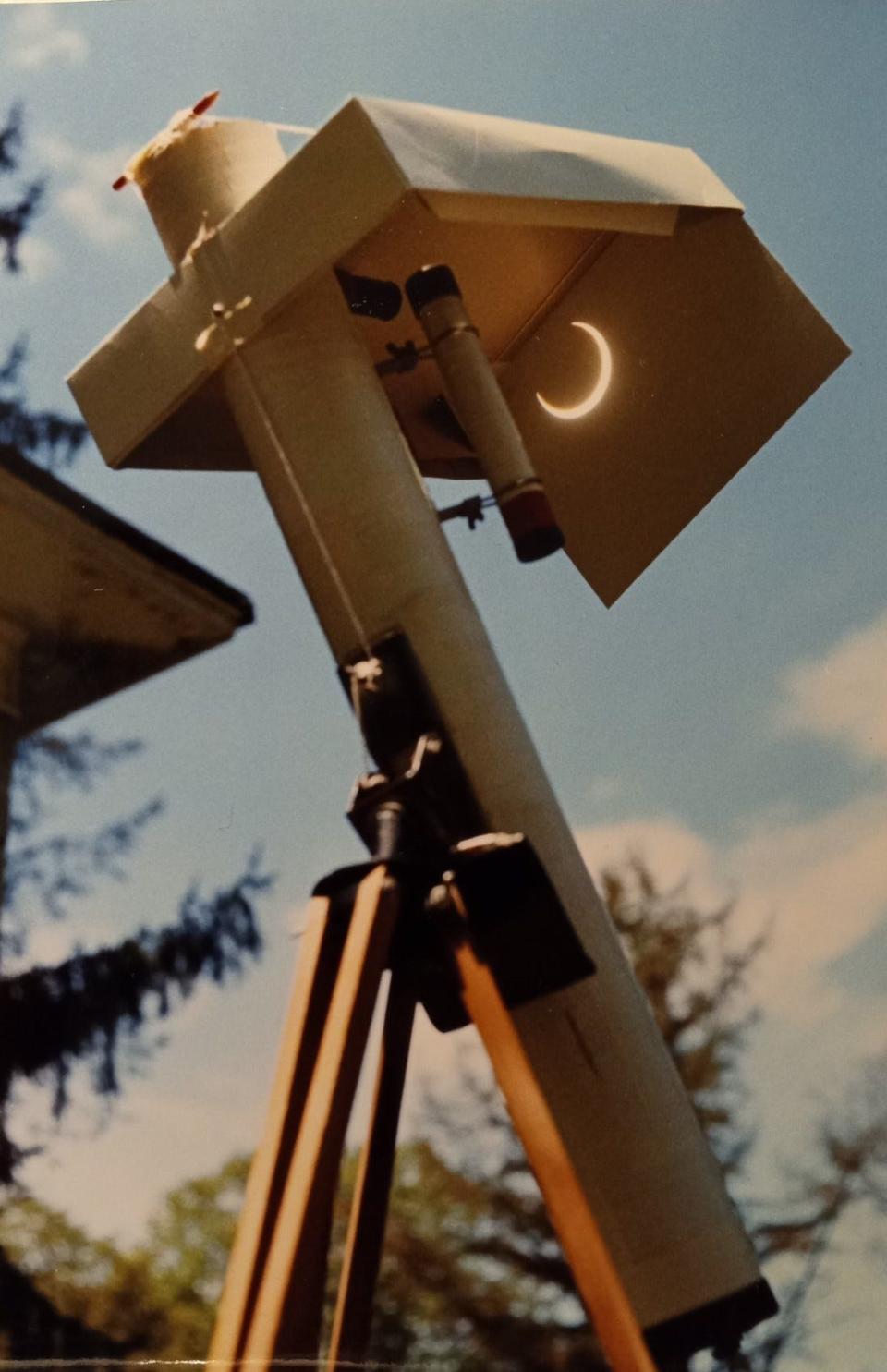
My entire backyard and the blue sky dimmed as if looking through non-tinted sunglasses. I looked beneath a tree and witnessed hundreds of small crescent suns on the grass, caused by the light passing through the hundreds of tiny holes created by overlapping leaves. I recorded the temperature as it slowly dropped six degrees. The shadows of everything around me went from having sharp edges to blurred, out-of-focus edges.
As seen from my backyard, the sun was 91% covered at maximum. This time it will be much deeper.
An interactive eclipse map found at timeanddate.com shows the data for any location. Here is a sample list of the magnitude of the partial eclipse and times to the second for when it begins, reaches maximum and is over.
Starrucca: 96.23%; 2:09:08; 3:24:10, 4:35:20 p.m.
Carbondale: 95:11%; 2:09:50; 3:24:00, 4:35:15 p.m.
Honesdale: 94.80%; 2:09:13; 3:24:19, 4:35:29 p.m.
Milford: 93:28%; 2:09:44; 3:24:48, 4:35:50 p.m.
Stroudsburg: 92.55%; 2:09:53; 3:24:09, 4:35:25 p.m.
Viewing the eclipse safely
The only safe way to view the sun directly is by properly using appropriate solar filters made by reputable firms. There are several companies selling solar eyeglasses, extremely popular at the last total event crossing America in 2017. Looking through them, the only thing you should be able to see is the sun, or other similarly bright light sources, like sunshine reflected in a headlight. Never use these eyeglasses in combination with a telescope or binoculars.
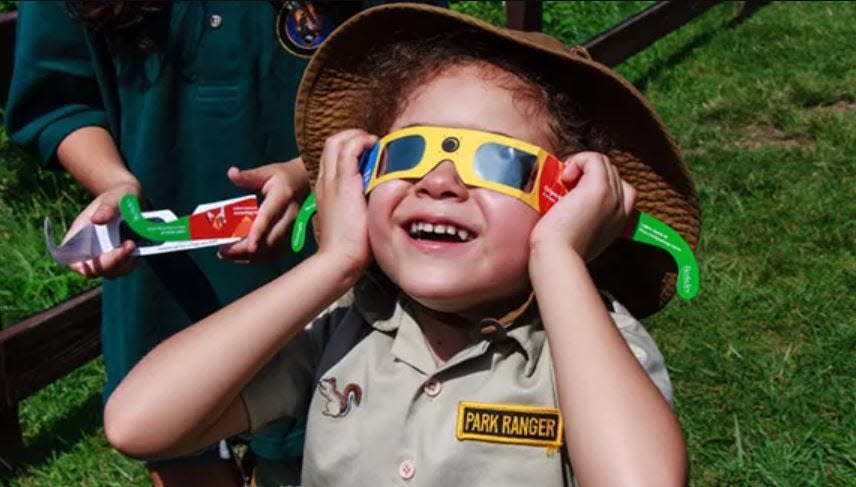
Safe solar filters are sold that fit over the front end of a telescope or binoculars. These must be secure. Don't use a solar filter over the eyepiece; the focused sunlight can crack the filter and reach your eye. Catching the intensified solar rays without a filter can permanently damage your retina. Cover up the telescope's "finder scope" on the side if any children are nearby and tempted to look. Line up the telescope by the shadow of the tube.
There are several completely safe indirect ways, some using simple materials you may have handy around your house.
Project a small image of the crescent sun through a pinhole onto a white cardboard screen. Make a pinhole projector with a long mailing box or gift-wrapping paper tube. Cover the top with cardboard and make a pinhole in the center. Rest the tube on your shoulder with your back to the sun and line up the tube with its shadow. Cut a large viewing hole, about 3 inches high, near the tube’s bottom. Cap the tube's bottom with white cardboard for a screen.
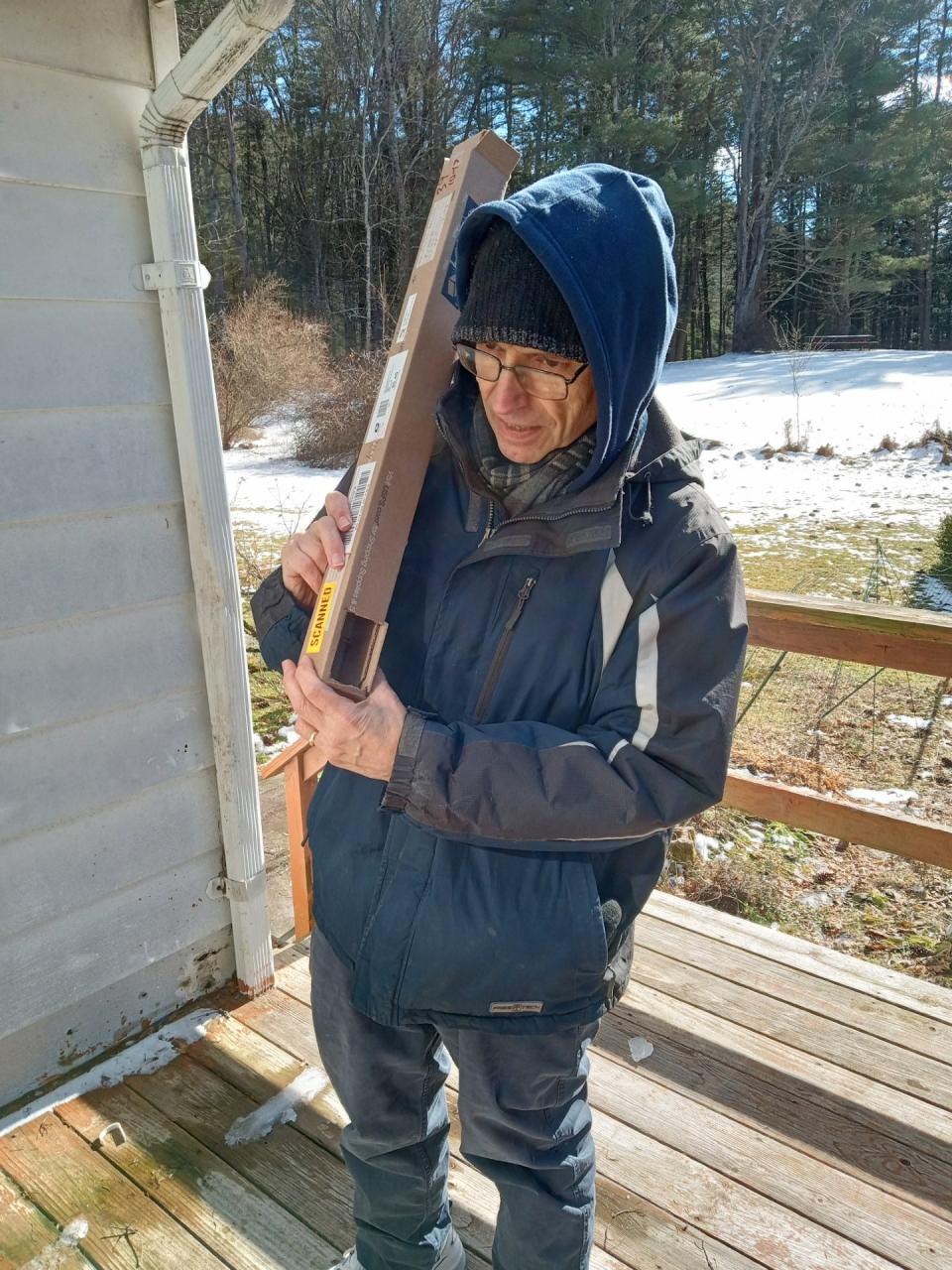
I made one out of a 2-foot-long, 2-inch-wide mailing box in maybe 15 minutes. I cut a 2-inch screen from a business card. This “solar pinhole mailing box” cast a nice round image of the sun, approximately a quarter inch wide. A gift-wrapping tube will be longer and will create a larger image.
You also can use a cardboard shoe box.
Get basic! You can even cast a tiny sun on your palm by clenching a fist with the other hand, leaving a tiny gap to project the sunlight.
Project the sun through a telescope or binoculars onto a white cardboard screen. Point the instrument by its shadow until the sun is found and focus till it is sharp. Binoculars should be on a tripod. A cardboard shade can be inserted over the binoculars with a hole for the front lenses (you can cap one of the lenses or else you'll get two crescent suns).
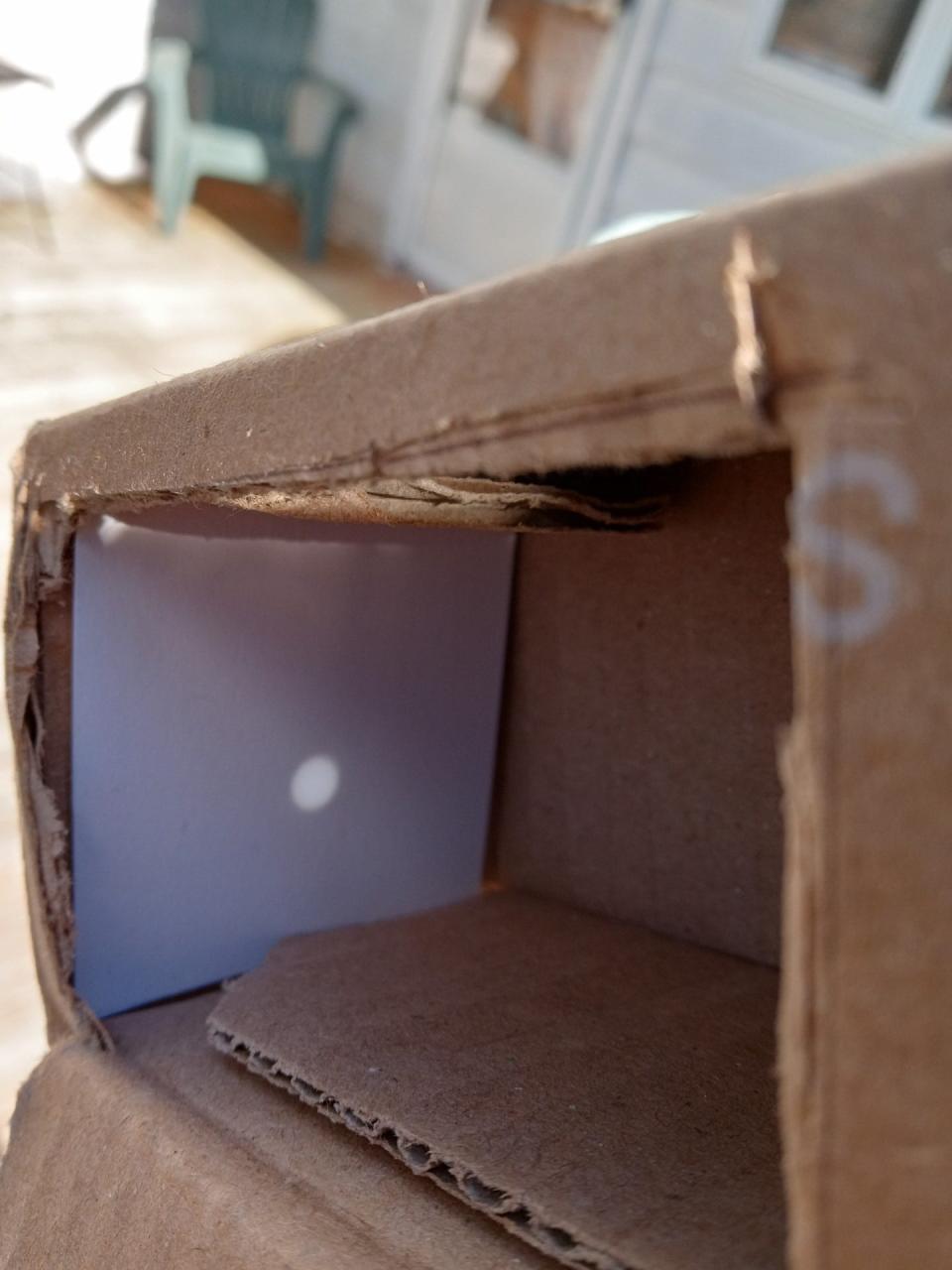
Homemade filters or ordinary sunglasses, even very dark ones, are unsafe for solar viewing.
There is no need to climb to a high perch “to get nearer the sun.”
Cloudy? No woe!
Even if it is overcast on eclipse day, you can enjoy the sun any sunny day.
Safely viewed with a telescope or binoculars by any of these methods, you can watch the ever-changing array of dark sunspots, which are currently increasing on their 11-year cycle. If there are noticeable sunspots on eclipse day, they will be handy markers to watch the progress of the eclipse.
When is the next eclipse?
There is always next time. The next partial solar eclipse visible from the northeastern U.S. occurs soon after sunrise on March 29, 2025. From Honesdale, a 17% bite will be missing from the sun.
Eclipses are mathematically predictable, based on precise knowledge of the orbit of the moon and Earth's rotation. If the moon followed the sun’s plane exactly as seen against the sky, there would be a total eclipse at new moon every month, which would not be nearly so special. The next total solar eclipse visible in northeastern Pennsylvania is in 55 years on May 1, 2079, just after sunrise. Mark your calendar!
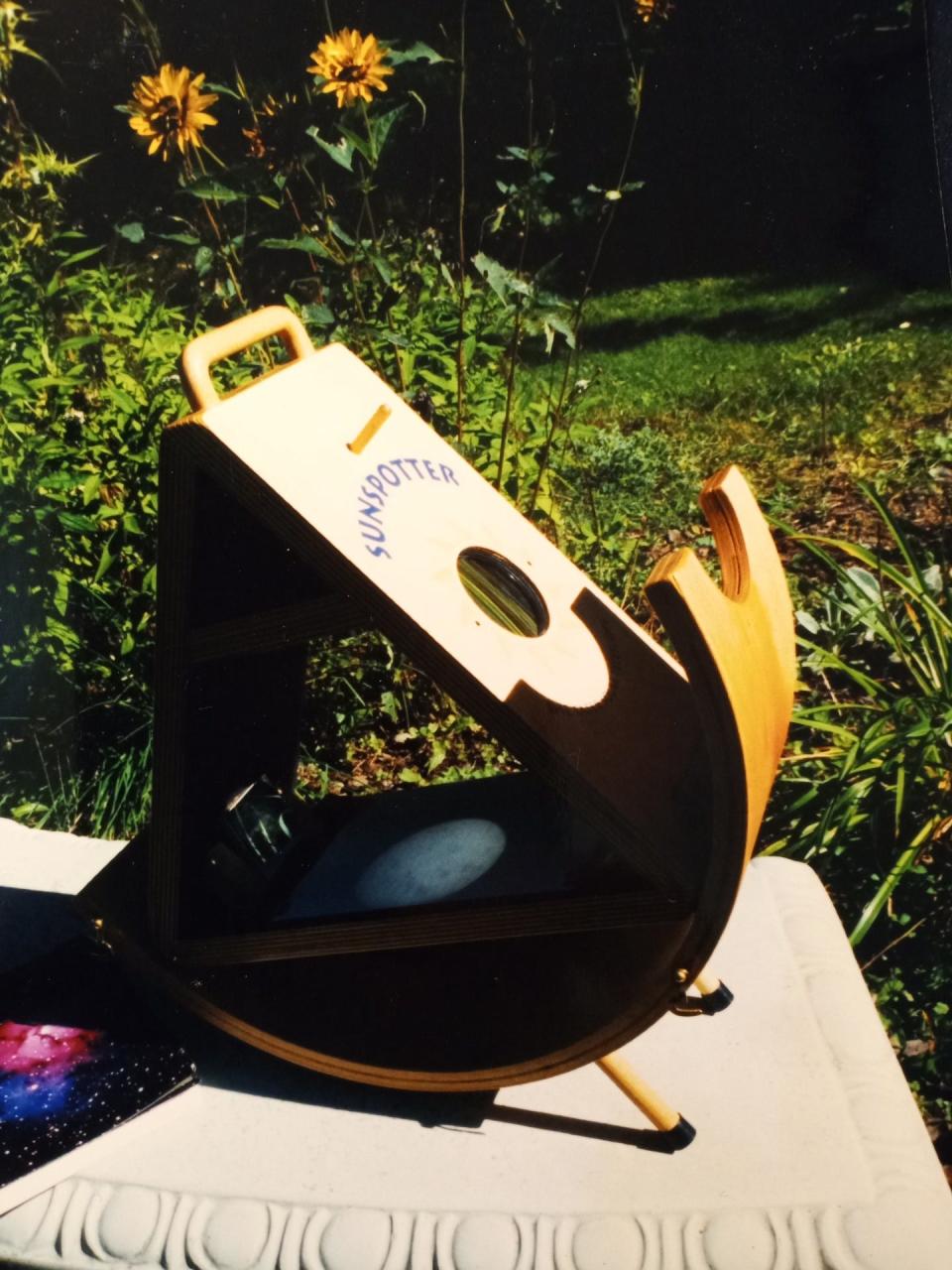
The last total solar eclipse to cross this area was in 1925.
Did you see the 2017 total eclipse? Please tell the writer about your experience, for an upcoming story.
For more information on viewing the eclipse, visit:
nps.gov/subjects/naturalphenomena/upcoming-solar-eclipses.htm
jpl.nasa.gov/edu/learn/project/how-to-make-a-pinhole-camera/%E2%80%8B
Peter Becker has worked at the Tri-County Independent or its predecessor publications since 1994. Reach him at pbecker@tricountyindependent.com or 570-253-3055 ext. 1588.
This article originally appeared on Tri-County Independent: 2024 eclipse: What to expect in Poconos, northeast Pa.

